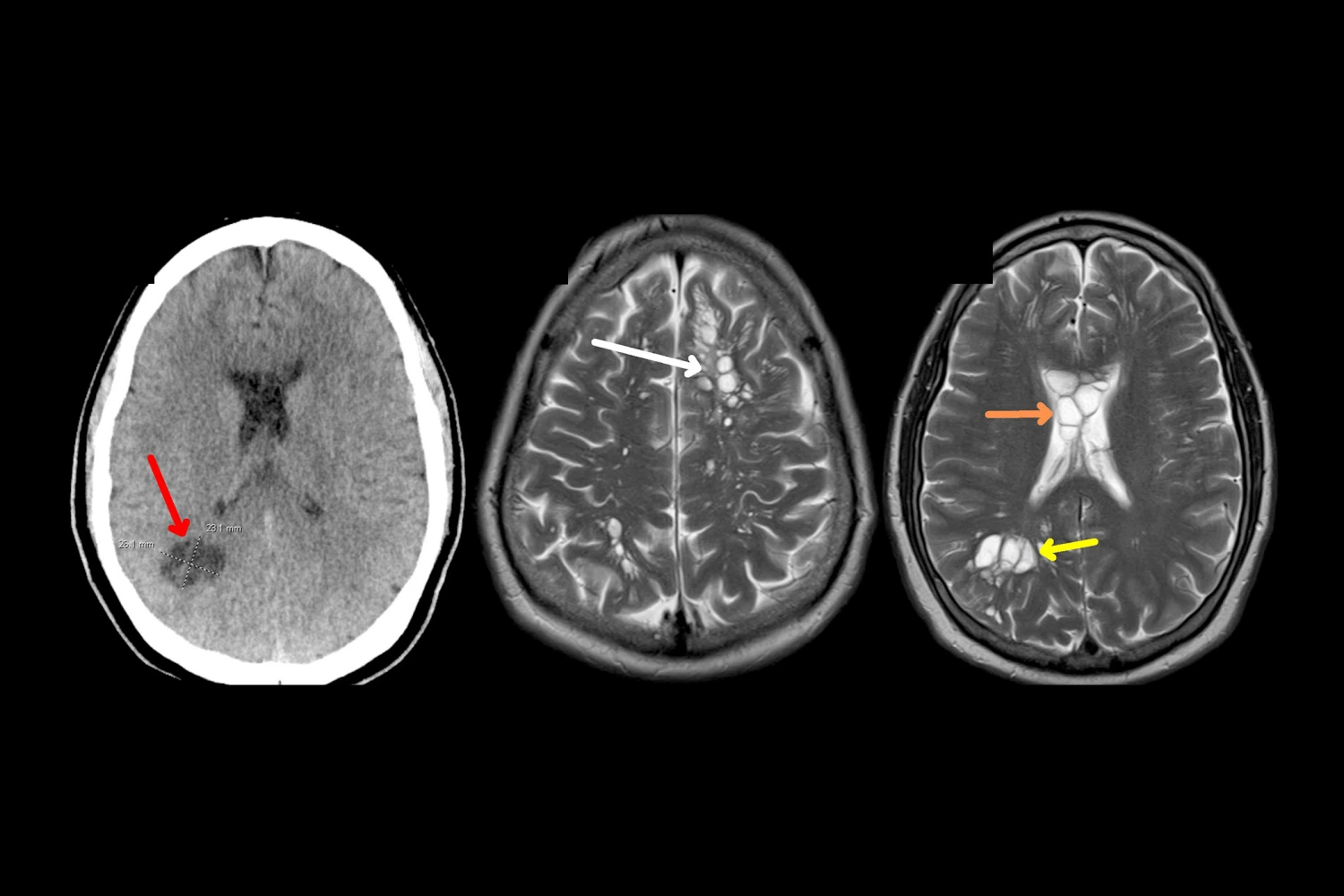Parasitic tapeworm larvae were discovered in a man’s brain after he suffered worsening migraines for weeks, which researchers suspect were triggered by his consumption of undercooked bacon.
According to a report released recently in the American Journal of Case Reports, an unidentified 52-year-old American man had been experiencing persistent migraines on a weekly basis that did not respond to medication.
The man, who lived at home with his wife and cat in a modern residence, denied traveling to regions known for food insecurity. However, upon further questioning, he disclosed a lifelong preference for “lightly cooked, non-crispy bacon.”
Following a CT scan, Florida-based researchers identified numerous fluid-filled sacs, or cystic foci, in his brain.
There were no signs of a tumor or hydrocephalus, a condition characterized by fluid buildup in brain cavities, leading researchers initially to consider congenital neuroglial cysts.
Upon admission to the hospital, the man tested positive for cysticercosis cyst antibodies, confirming a diagnosis of neurocysticercosis—a preventable parasitic infection caused by larvae from the pork tapeworm Taenia solium.
“While it can only be speculated, given our patient’s history of undercooked pork consumption and lack of significant exposure, we suspect he contracted cysticercosis via autoinfection due to inadequate hand hygiene after initially acquiring taeniasis,” the researchers stated.
The patient was treated with a regimen of anti-inflammatory and anti-parasitic medications, including dexamethasone, albendazole, and praziquantel, which proved successful.
“The treatment of neurocysticercosis is a subject of debate,” the researchers added.

“Antiparasitic drugs like albendazole or praziquantel effectively combat Taenia solium, but there is concern about the inflammatory response triggered when cysts are eradicated, prompting caution among clinicians in deciding on treatment strategies.
After weighing the risks and benefits, our patient chose definitive treatment with albendazole.”
Neurocysticercosis occurs when individuals ingest microscopic tapeworm eggs. According to the Centers for Disease Control and Prevention (CDC), if someone consumes undercooked, contaminated pork and develops a tapeworm infection in the intestines, they can excrete eggs in their feces.
Failure to practice proper handwashing after using the toilet may lead to contamination of food or surfaces with feces containing these eggs, which can be ingested by others.
Once inside the body, the eggs hatch into larvae, which can potentially lodge in the brain and cause neurocysticercosis.
Symptoms vary depending on lesion locations, parasite numbers, and the host’s immune response, potentially including epilepsy, headaches, dizziness, and stroke.
Although neurocysticercosis occurs globally, it is most prevalent in regions of Latin America, Asia, and Africa with poor sanitation and free-roaming pigs that have access to human feces, as reported by the CDC.
In the U.S., approximately 1,000 new hospitalizations for neurocysticercosis are estimated annually, with higher rates in states such as New York, California, Texas, Oregon, and Illinois.
Currently, neurocysticercosis is classified as a neglected parasitic infection by the CDC, indicating significant illness among those affected and often inadequate understanding among healthcare providers.
